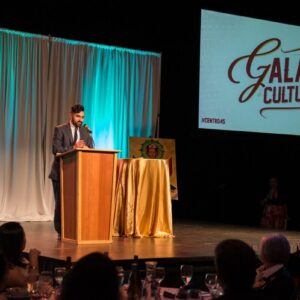Sponsorship Best Practices Yield Big Results
This spring all of the incredibly hard cultivation work done by Juan Carlos Gonzalez, Development Director at Centro Cultural de Washington County, paid off at their annual Gala de Cultura. He spent over a year cultivating the event’s sponsors. And the return on his investment was huge. He expanded the organization’s ability to fundraise for the event by bringing a great bench of sponsorship support.
Juan Carlos went about it with a very specific plan. He utilized personal relationships of people connected to the organization to open doors of conversation with new potential sponsors and he went back to former sponsors and refreshed a relationship with them and brought them along in the organizations work.
The results were several new sponsors, and return sponsors who increased their support. Juan Carlos spent the year incredibly invested in the strategy of his outreach, avoiding cold calls, and utilizing relationships to open conversations. He did a deep dive into who he was targeting and how best to meet them where they were. The result was not a broad landscape of light touches, but deeper relationships with a specific group that he will continue to cultivate.
The sponsors felt seen, heard and a part of both the organization and the event.
When cultivating and securing sponsors for events, there are a few things to keep in mind. Use these guidelines as best practices for your sponsorship relationships.
Cultivating Relationships
Corporate giving officers are often overwhelmed all day long. The relationships you have with them are critical. The ones you cultivate most will keep your organization rising to the top of their list. Relationships take time and work.
You also want to remember that a sponsorship is a fee for benefits. When the benefits are in line with the goals of your nonprofit and the goals of the corporation, there is a great match. Always keep in mind the giving guidelines your corporate sponsors have identified. Do the research and make sure your organization falls within these guidelines. Sponsors are looking for effectiveness in the nonprofits they fund. Talk about your organization’s success in meeting your mission and why their support matters.
The Proposal
Keep it simple! If the production of your proposal is too much, this sends a message to your sponsors that you are not using sponsor money wisely. You don’t need to put all the bells and whistles into a proposal. A simple, clearly stated proposal is best.
Give your sponsors time when you solicit them. Smaller sponsors should be given 90-120 days prior to an event. Larger sponsors need to plan for their annual budgets, so they should be solicited one year out.
Utilize your time well and solicit umbrella sponsorships. This type of sponsorship includes every event your organization has going on during the year or several years. It gives potential sponsors the opportunity to choose what events will best fit within their guidelines and it saves time for your organization.
Post-Event
Every sponsor at the $5,000 level and above needs a fulfillment packet showing that the sponsor received all the benefits promised. This shows you kept your end of the relationship. The packet should list all the benefits they have gotten for their sponsorship and include copies of how they were fulfilled.
Be sure and thank EVERY sponsor after the event in a timely manner. In addition, ask their opinions about the event with a survey or during your next meeting.
photos by Brit Forbes









